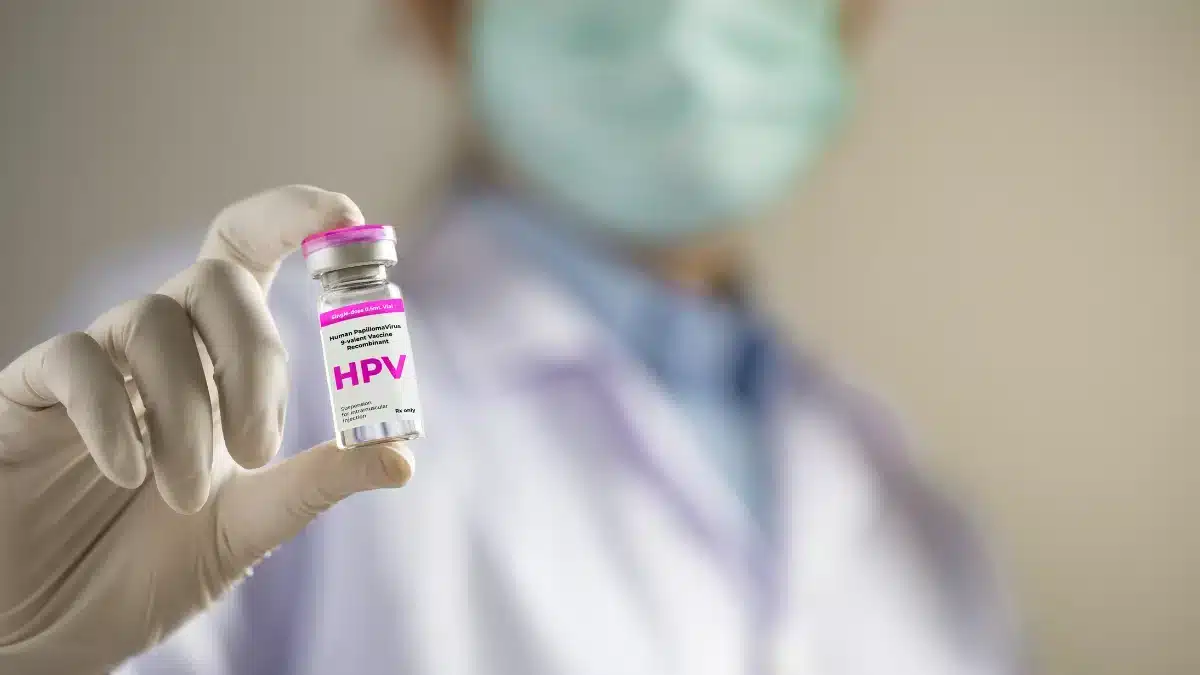How Does a Married Woman Get HPV? Exploring HPV Transmission and its Preventions
Human Papillomavirus (HPV) is a highly viral Sexually Transmitted Infection.
Married women may acquire HPV through various factors like sexual transmission.
Understanding these channels is crucial for informed decision-making and managing the infection.
In this article, we will talk about how does a married woman get HPV in detail.
Additionally, we will discuss preventive strategies that married couples can adopt to minimize the risk of HPV transmission.
HPV transmission in married women
Here are several ways in which a married woman can get HPV:
Sexual transmission

HPV is commonly transmitted through intimate skin-to-skin contact, especially during sexual activity.
There are more than 100 types of HPV virus. Approximately 40 types of this virus can infect genital areas, mouth, and throat.
This mode of transmission can affect all individuals regardless of their marital status.
Weakened immune system
A weakened or suppressed immune system can increase the likelihood of HPV infection.
Conditions such as stress, illness, or certain medications can compromise or suppress the system’s ability to fight off infections.
These conditions can make a married woman more susceptible to acquiring HPV.
Asymptomatic carriers
HPV can be present in couples who show no visible signs or symptoms.
Even if a person appears healthy, they might carry the virus.
In such cases, transmission can occur without either partner being aware of the infection.
Preventing HPV transmission
There are certain preventive measures that can help alleviate the risk of Human Papillomavirus (HPV) infection.
Here are key strategies:
Regular screenings
Regular cervical screenings, such as Pap smears, are essential for detecting HPV-related abnormalities early.
Early detection allows for timely intervention and reduces the risk of complications.
Open communication
Honest communication between partners is vital.
Discussing sexual health and previous exposures can help both individuals make informed decisions about protecting themselves and each other.
Break the stigma, prioritize honesty, and ensure both partners are informed for a healthier and safer sexual experience
Get vaccination
HPV vaccines are available to protect against the most common types of the virus.
If either partner has not been vaccinated, they may be at a higher risk of getting HPV.
Vaccination is a preventive measure that can significantly reduce the transmission of the virus.
Consistent condom use

Condom use can help alleviate the risk of HPV transmission, but it does not eliminate it entirely.
If couples do not consistently use condoms during sexual activity, there is a risk of HPV transmission.
Therefore, it is better to use barrier methods like condoms consistently and correctly.
Conclusion
Human Papillomavirus transmission in married women can occur through various channels.
It happens primarily through intimate skin-to-skin contact during sexual activity.
HPV is highly contagious, and even asymptomatic carriers can unknowingly transmit the virus.
Regular screenings, such as Pap smears, enable early detection of HPV-related abnormalities.
Open communication between partners is essential for making informed decisions about protecting each other.
HPV vaccination is a highly effective preventive measure, significantly reducing the transmission of the virus.
Consistent and correct condom use is recommended to reduce the risk further.
Frequently Asked Questions
How does a married woman get HPV?
A married woman can get HPV through intimate skin-to-skin contact during sexual activity. HPV, a highly contagious virus, can be transmitted even when carriers exhibit no visible symptoms. A weak immune system due to stress, illness, or certain medications can contribute to acquiring HPV.
Is HPV asymptomatic in nature?
Yes, HPV can be asymptomatic in nature. It means the person may not display visible signs or symptoms. Asymptomatic individuals can unknowingly transmit the virus to their partners. Regular screenings, vaccination, and consistent condom use are key preventive measures.
How to prevent HPV transmission in a married woman?
Preventing HPV transmission in a married woman involves certain things. It includes regular screenings like Pap smears for early detection, open communication with the partner, HPV vaccination, and consistent condom use during sexual activity.
What are the factors that can cause HPV transmission in a married woman?
There are various factors that can cause HPV transmission in a married woman. The infection can occur through sexual transmission, even with no visible symptoms. A suppressed immune system due to stress, illness, or certain medications increases the susceptibility to HPV infection.
WowRx uses only high-quality sources while writing our articles. Please read our content information policy to know more about how we keep our content reliable and trustworthy.






